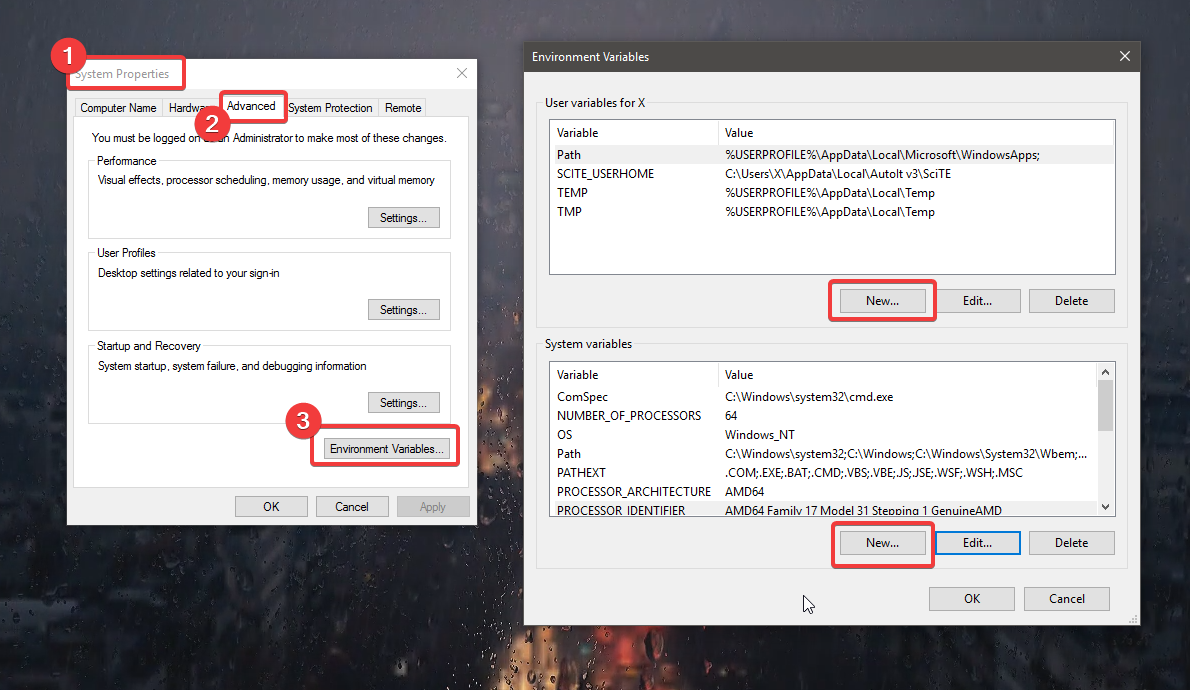unicat13
Member
- Downloaded
- 36.6 GB
- Uploaded
- 13.6 GB
- Ratio
- 0.37
- Seedbonus
- 2,774
- Upload Count
- 0 (0)
Member for 4 years
I have many times problem with install or update direct x 9c and i find fixing solution for this problem, if anyone have this problem click on windows start icon and typing advanced system and click on view on advanced system settings and then click on Environment Variables, in user variables edit TEMP and TMP default path value, delete default path value and put new c:\Temp for both path and click ok, then direct x 9c install or update will work.
After install If you want edit back old path value for this both path.
After install If you want edit back old path value for this both path.
Last edited:

